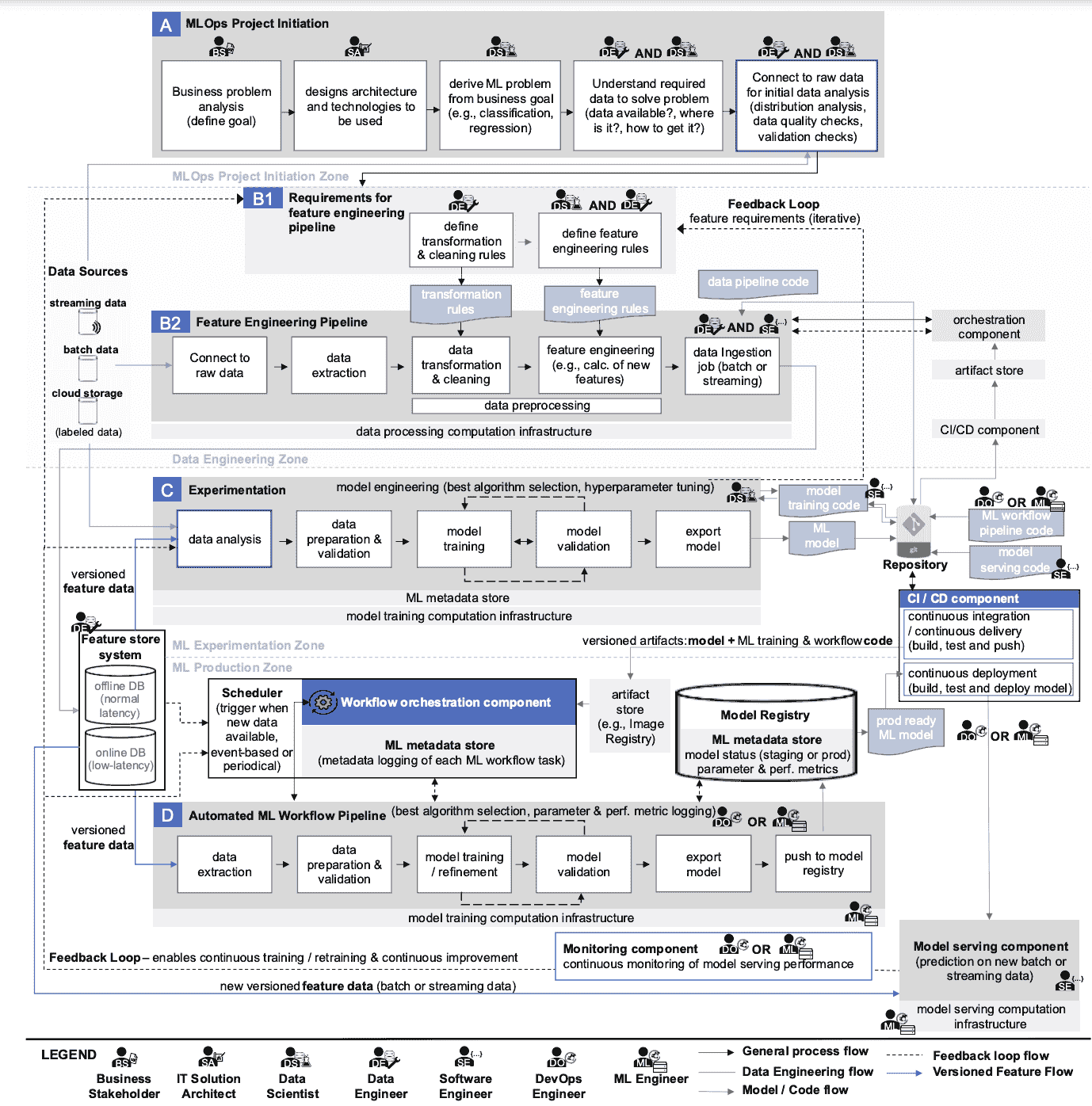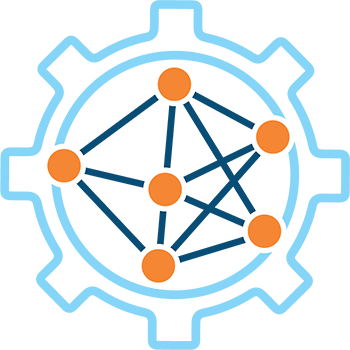MLOps conceptual framework listing all machine learning operations
- Edwin Kuss
- 4 min
How to describe all the processes related to the concept of MLOps? Surprisingly, the authors of the article “Machine Learning Operations (MLOps): Overview, Definition, and Architecture” – even managed to encapsulate them in a single scheme. They did real research and described the MLOps concept in great detail.


This conceptual framework illustrates how all machine learning operations — from data preparation and feature engineering to model training, validation, and deployment — are connected in a continuous loop. It divides the MLOps ecosystem into several functional zones:
- Project initiation (A) – defining the business problem and converting it into an ML task.
- Data engineering (B1–B2) – preparing raw data, creating features, and ensuring quality and consistency.
- ML experimentation (C) – running training jobs, comparing models, and storing metadata for reproducibility.
- Workflow orchestration (D) – coordinating automated pipelines that connect data, model, and deployment processes.
- Deployment and monitoring (E) – registering models, deploying them for serving, and tracking performance in production.
Each of these stages feeds into the next through feedback loops, ensuring that new data and insights continually refine model performance. Supporting components like CI/CD pipelines, model registries, and monitoring systems form the backbone of reliable MLOps practices.
While the framework may appear complex at first glance, it provides a unified view of the entire machine learning lifecycle — illustrating how technical, operational, and governance elements interact to create scalable and maintainable AI systems.